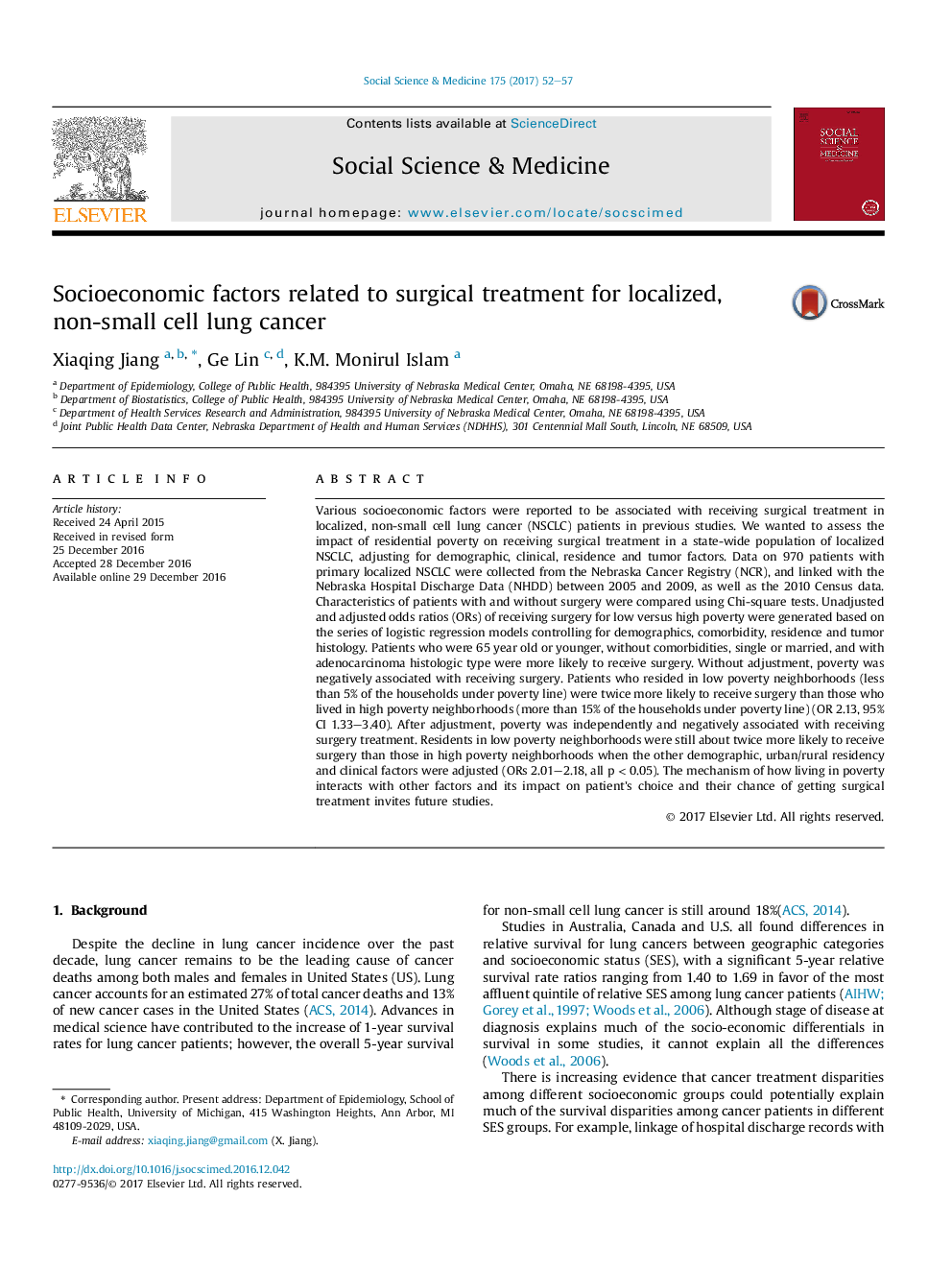| کد مقاله | کد نشریه | سال انتشار | مقاله انگلیسی | نسخه تمام متن |
|---|---|---|---|---|
| 5046680 | 1475994 | 2017 | 6 صفحه PDF | دانلود رایگان |
- The median survival for surgery patients is 4 times that of non-surgery patients.
- Residential poverty had a negative impact on the chance of receiving surgery.
- Sex and rural/urban residency has no independent impact on surgery use.
Various socioeconomic factors were reported to be associated with receiving surgical treatment in localized, non-small cell lung cancer (NSCLC) patients in previous studies. We wanted to assess the impact of residential poverty on receiving surgical treatment in a state-wide population of localized NSCLC, adjusting for demographic, clinical, residence and tumor factors. Data on 970 patients with primary localized NSCLC were collected from the Nebraska Cancer Registry (NCR), and linked with the Nebraska Hospital Discharge Data (NHDD) between 2005 and 2009, as well as the 2010 Census data. Characteristics of patients with and without surgery were compared using Chi-square tests. Unadjusted and adjusted odds ratios (ORs) of receiving surgery for low versus high poverty were generated based on the series of logistic regression models controlling for demographics, comorbidity, residence and tumor histology. Patients who were 65 year old or younger, without comorbidities, single or married, and with adenocarcinoma histologic type were more likely to receive surgery. Without adjustment, poverty was negatively associated with receiving surgery. Patients who resided in low poverty neighborhoods (less than 5% of the households under poverty line) were twice more likely to receive surgery than those who lived in high poverty neighborhoods (more than 15% of the households under poverty line) (OR 2.13, 95% CI 1.33-3.40). After adjustment, poverty was independently and negatively associated with receiving surgery treatment. Residents in low poverty neighborhoods were still about twice more likely to receive surgery than those in high poverty neighborhoods when the other demographic, urban/rural residency and clinical factors were adjusted (ORs 2.01-2.18, all p < 0.05). The mechanism of how living in poverty interacts with other factors and its impact on patient's choice and their chance of getting surgical treatment invites future studies.
Journal: Social Science & Medicine - Volume 175, February 2017, Pages 52-57
